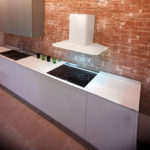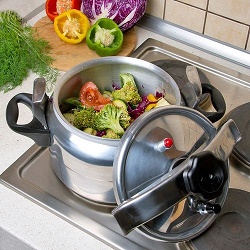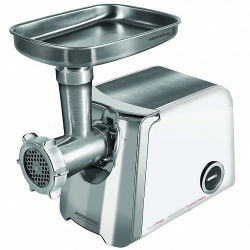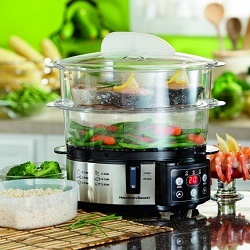Characteristics of a kitchen hood with a width of 50 cm
The kitchen is the room where we most often encounter various smells. So that the aroma of fried potatoes or rich soup does not “walk” in the other rooms, it must be taken out into the street. Best of all, this problem is handled by specially designed appliances, the most popular of which are kitchen hoods 50 cm wide.
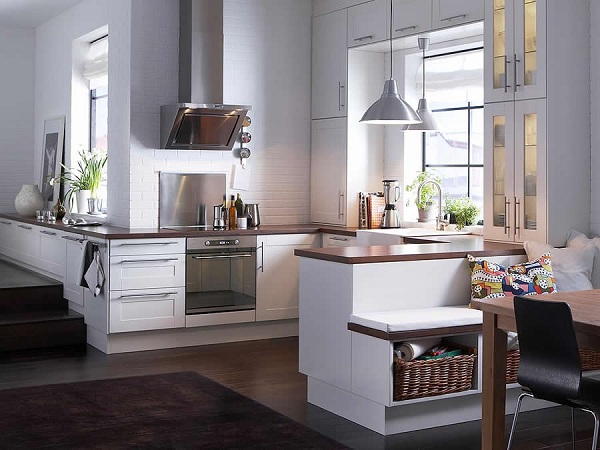
Content
Advantages of a half-meter hood
Like any other hood, the device of this size is aimed at creating a comfortable atmosphere at the time of cooking - during operation of the device unwanted odors are removed, and air cleaning from harmful microparticles.There are some models that, while working, on the contrary, add useful substances to the atmosphere of a room.
In the presence of a gas stove exhaust hood installation simply vital, because during operation of the burner a large number of hazardous compounds, including carbon monoxide, are emitted. So that the case does not end with poisoning, its concentration must be reduced, leading out of the kitchen. Kitchen 50 cm width hoods are the best option, especially in the conditions of most small apartments. Such dimensions allow rational use of the presented area.
50-centimeter version is suitable even for two-ring models. If the plate is large, respectively, and the hood should be chosen with a greater width.
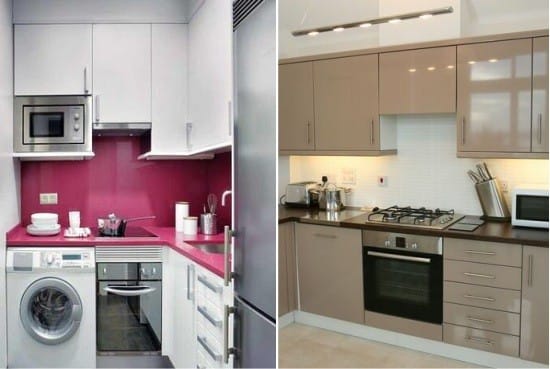
Hood over 4 and 2 hotplates
Choosing the right hood
Before buying such a device, it is important to pay attention to the following indicators:
- instrument performance;
- power consumption;
- availability of operating modes;
- noise level;
- safety performance;
- type of installation;
- design;
- type of management;
- the presence of filters.
Each of the criteria should be defined according to the individual conditions that the kitchen represents.
Performance
What kind performance should have a hood with a width of 50 cm? It turns out that this parameter affects room volume. Typically, the manufacturer indicates this figure in the annotation to the model, but it can be easily calculated by the user himself, at the same time, and having understood the desired performance value.
- To find out the volume of air in the room, you need to multiply the area by the height and subtract the amount of furniture and kitchen equipment from the result.
- At the same time, the multiplicity of passable air exchange is taken into account (here sanitary norms of 10–12 cycles per hour must be taken into account) and the power reserve of the apparatus itself with a coefficient of 1.3.
- All obtained figures must be multiplied together (cubic meters of volume for multiplicity and coefficient). At the same time, air losses are added (each angular deviation is 10%, respectively, all angles should be taken into account).
The result is a sample of optimal performance. Weaker models will simply not cope with airborne tasks. A very powerful model is not profitable in economic terms.
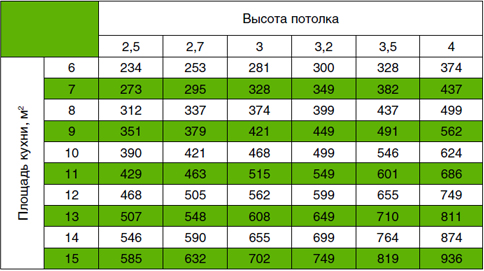
Recommended capacity table
power usage
The future user must also look at the energy efficiency of the purchased device.It is about the ratio of power and performance, which may be different from different manufacturers. Everything, of course, depends on the design features of the equipment, the built-in capabilities of capturing and generating air flow, which together determines energy efficiency devices. For example, under the condition of consumption of 225 V, it may be that one model will distill 450 m3 / h, and the other is capable of accelerating to 700.
Operating modes
The kitchen hood with a width of 50 cm has two main functions - air vent and his recycling. It means that:
- With a simple diversion of air, all unnecessary odors and gases go to separately purchased and assembled air duct.
- If recycling is provided in the model, the air will be cleaned inside, without being discharged. Only the system can withstand such a load. built-in filtersthat need to be cleaned and changed from time to time.
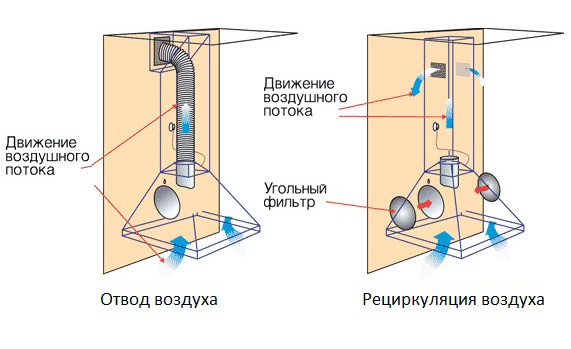
Noise and safety level
Regarding the first question, we can say that we have not yet come up with quite silent exhaust hoods. It is definitely not recommended technique, whose noise level reaches 70 dB - it will be just annoying.
Speaking about safety, first of all, they mean work with models of gas heaters. It is important to prevent reverse thrustwhen carbon monoxide goes back to the room. This is especially true for plates with open combustion chambers.
Type of installation
The type of installation depends on the mounting method offered by device manufacturers. Here is the following classification:
- Suspended hoods 50 cm are installed under a kitchen wall cabinet or a shelf above the stove. In form, this is usually a flat hood 50 cm wide.
- Embedded options more organically fit into the interior. They are mounted in a 50 cm wide wall closet or decorative fireplace. There are more proposals built into the desktop, which is located directly next to the work surface.
- Wall mounted models are mounted directly on the wall.
- Corner designed for installation in the appropriate area: it is assumed that the working area (stove) is also angular.
- Is there some more island options - This is when the hob has an approach from all sides (respectively, and the hood, too).
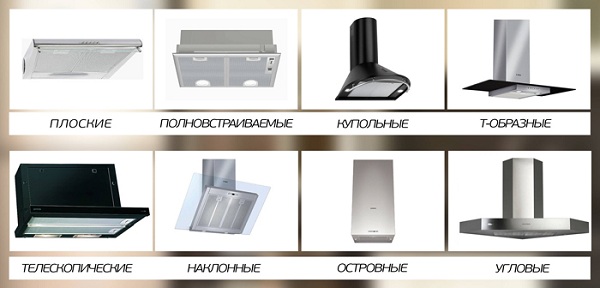
Design
For harmony with the general concept of the interior, it is necessary to select the appropriate design of the device, which can be:
The flat version, although it has a stylish look, is recognized as the most noisy and unproductive. It also scares off the fact that in this case the filters have to be changed frequently.
Compared to them, dome are more powerful and attractive. They have a built-in turbine that minimizes work noise. However, they can not be called compact, even if they are presented in the corner version.
The most convenient half-meter solution in terms of hoods are built-in options. They are mounted inside the furniture, and the design is completely hidden. This eliminates the need to select the appropriate style kitchen appliances.
It does not matter what design the future owner of the hood would like more - the main thing is that the following should be observed requirements:
- The distance between the hood and stove electric type must be at least 70 cm. In case the gas stove is located at the bottom, it should be at least 80 cm.
- At hood selection it is important that its size is not less than the size of the stove.
- Material is also important for the design - it is presented in polished stainless steel (expensive, but practical coating), enamel (affordable and practical, but not so durable) and hardened tinted glass (beautifully, but impractical).
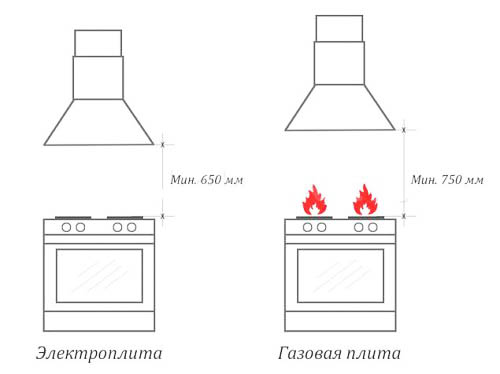
Management capabilities
Manufacturers offer one of the following options:
- Mechanical performance (it is also a button or slider), which is simple and cheap. The downside is that over time the controls can become dirty and sticky.
- Electronic control, which is most often presented in stylish touch panels. This makes it possible to supplement the device with a host of other options - from automatic monitoring of the condition of filters and the presence of a variety of sensors to remote control using the appropriate remote control.
Types of filters
These components determine the efficiency of the entire device. Common options are:
- basic for rough cleaning (grease-absorbing);
- coal for fine cleaning (replaceable type);
- combined species.
If we talk about brands, then the popular brands include the Russian Elikor, Krona, German hoods Hansa and Spanish Cata. Gorenje, Akpo and Gefest are also very popular.
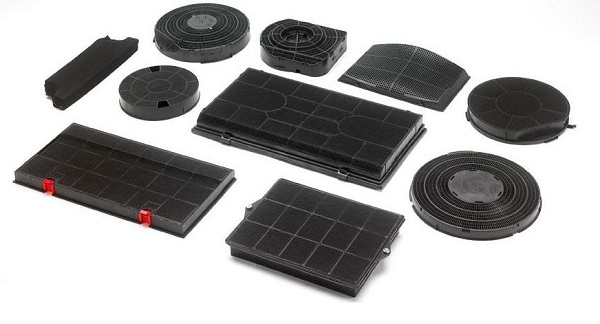
Installing a built-in hood 50 cm wide
Models of similar dimensions are good because you can completely preserve the idea of the interior, without any interference in it. The main thing is to match the width of the headset, otherwise you will have to do for such a technique separate box.
The installation itself will be carried out according to the following scenario:
- After determining the location, you can begin to cut holes in the bottom part - the hole must correspond to the size of the technique.
- We'll have to make a hole in the upper part - it will be designed for the duct, which will connect the device with an opening for ventilation in the wall. Here you need to navigate under the pipe: corrugated option will have a round hole, rectangular the channel is also with the corresponding hole.
- First, attach the hood itself. If necessary, the rear mounting, under it makes an additional hole in the rear panel. And if there is a hood exit panel, it is necessary to trace its further unimpeded departure.
Installing the hood in the kitchen - proof of concern for a healthy atmosphere in the house.A half-meter width of the equipment will allow you to install it even on the closest kitchen without any problems.

/rating_off.png)






